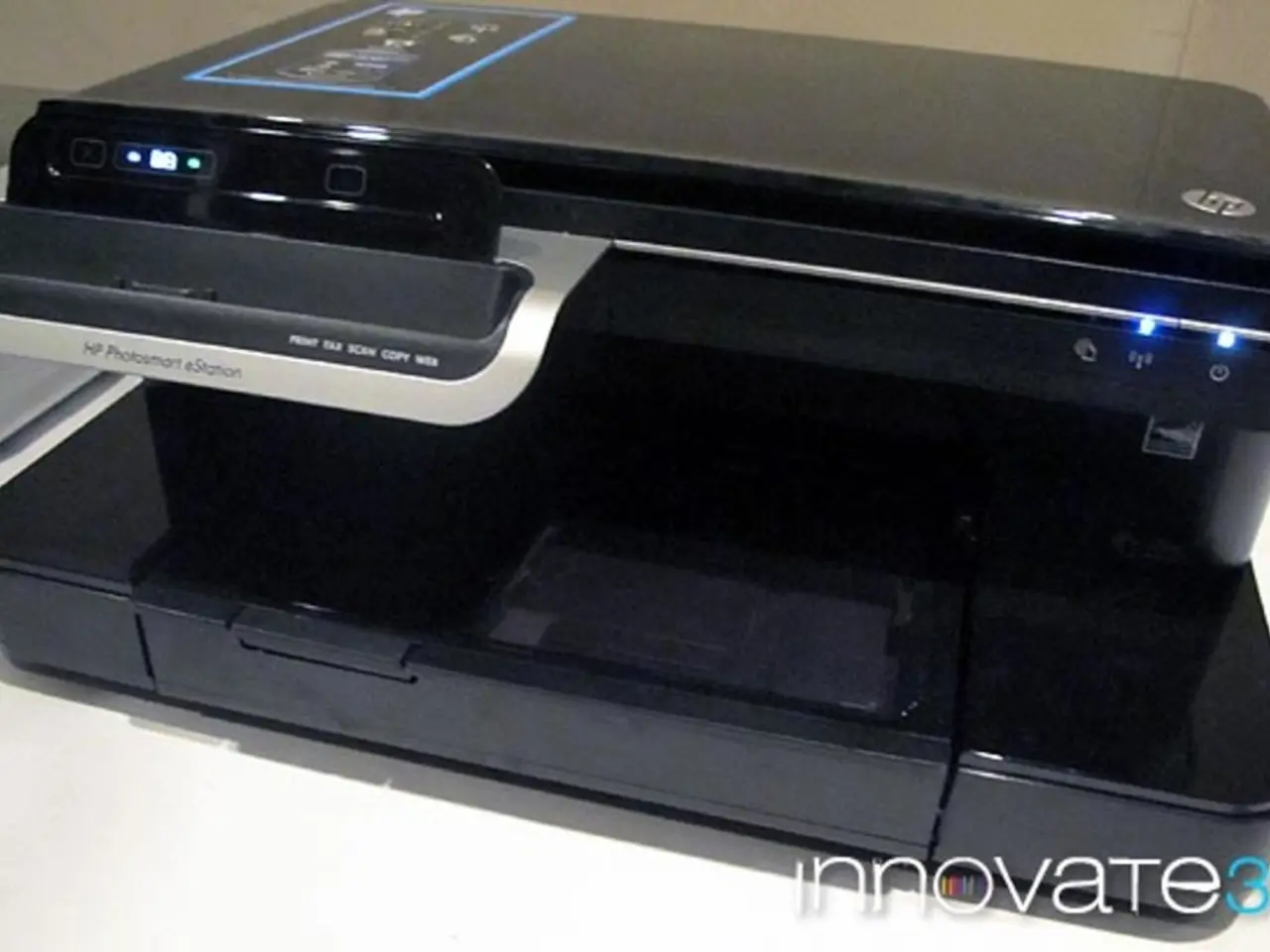Federal Reserve maintains current interest rates, disregarding pressure from President Trump
Headline: Federal Reserve Keeps Interest Rates Steady Amid Economic Uncertainty and Inflation Concerns
In a move that reflects the ongoing economic uncertainty and inflation concerns, the Federal Reserve has decided to keep its benchmark interest rate steady at a range of 4.25% to 4.5% for the fifth consecutive policy meeting. This decision comes after three rate cuts in 2024, following a peak of 5.25%-5.5% in mid-2023.
The Fed's interest rate decisions have a significant impact on borrowing costs across various financial sectors. For instance, car loans and home renovation loans tend to become more expensive or cheaper in tandem with Fed rate moves. Currently, with the rates steady at 4.25%-4.5%, borrowing costs are still relatively high compared to the post-pandemic lows, dampening demand for big-ticket purchases and keeping lenders cautious.
Consumer borrowing costs, including credit cards and personal loans, are also influenced similarly. Higher Fed rates mean banks’ cost of funds rises, so they charge more for loans and credit, which can reduce consumer spending and borrowing. However, savers with high-yield savings accounts and certificates of deposit (CDs) continue to benefit from inflation-beating returns, as banks compete for deposits.
The current economic environment supports a cautious stance, as the Fed aims to manage inflation without worsening labor markets. Economists predict possible rate cuts later in 2025, which could ease borrowing costs slightly.
Meanwhile, the housing market is experiencing a mixed picture. Sales of existing homes dropped 2.7 percent from the previous month, despite continuing housing supply shortages. The median home sale price for June 2025 surged to $435,300, the highest on record.
The ongoing trade tensions are also reflected in the tariff rates on key trading partners, which are at their highest level since the Great Depression. This could result in higher prices across store shelves and weaken economic growth, with businesses potentially starting to cut back on hiring or reduce headcount to offset these costs.
In other financial news, the S&P 500 and Nasdaq have both been flirting with record highs, with volatility being low according to the Chicago Board of Options Exchange's Vix Index. Consumer borrowing costs are slightly lower than they were a year ago, due to the U.S. central bank lowering interest rates a full percentage point in late 2024.
Table:
| Financial Sector | Impact of Current Fed Rate (~4.25–4.5%) | |--------------------------|---------------------------------------------------------| | Car Loans | Moderately high interest rates, making loans costlier | | Home Renovation Loans | Higher borrowing costs, reflecting tighter credit conditions | | High-Yield Savings | Relatively attractive yields compared to recent years | | Consumer Borrowing (Credit cards, personal loans) | Elevated interest rates, limiting borrowing and spending |
As for savings, savers with high-yield savings accounts will continue to benefit from inflation-beating returns, with yields currently standing at 4% or more. Experts typically recommend keeping enough cash on hand to cover at least six months' worth of expenses. However, according to the Emergency Savings Report, only 46% of Americans have enough savings to cover three months' worth of expenses, less than half the recommended amount.
In conclusion, the Federal Reserve's decision to keep interest rates steady reflects a cautious approach to managing the economy amid ongoing inflation and labor market concerns. The housing market and consumer borrowing costs continue to present a mixed picture, while trade tensions persist and could impact economic growth.
- Despite the federally steady interest rates, savers with high-yield savings accounts still benefit from inflation-beating returns, with yields currently at 4% or more.
- Dampened demand for big-ticket purchases continues due to relatively high borrowing costs in the current economy, as a result of the Federal Reserve's steady interest rates.
- Economic experts predict possible rate cuts later in 2025, which could ease borrowing costs slightly across various financial sectors such as car loans and home renovation loans.
- The ongoing trade tensions have resulted in tariff rates at their highest level since the Great Depression, potentially weakening economic growth and causing businesses to cut back on hiring or reduce headcount to offset these costs.




